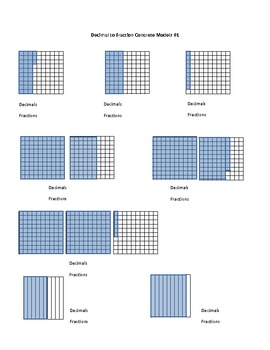

However, concrete materials are frequently shelved by the time children reach KS2 - many teachers believe them to be too childish or distracting. When teaching young children numbers, counters and multi-link cubes are more commonly used in the UK.

For example, drawing an array, a number bond diagram or a bar model.īy systematically varying the apparatus and methods used to solve a problem, children can craft powerful mental connections between the concrete, pictorial, and abstract phases. Likewise, children are encouraged to represent the day’s maths problem in a variety of ways. For example, students might one day use counters, another day they might use a ten frame.

#PICTORIAL MODELS IN MATH SERIES#
The MNP Primary Series approach encourages teachers to vary the apparatus that children use in class. Children are introduced to the concept at a symbolic level, using only numbers, notation, and mathematical symbols (for example, +, –, x, /) to indicate addition, multiplication or division.Īlthough we’ve presented CPA as three distinct stages, a skilled teacher will go back and forth between each stage to reinforce concepts. The abstract stage involves the teacher introducing abstract concepts (for example, mathematical symbols). Students will not progress to this stage until they have demonstrated that they have a solid understanding of the concrete and pictorial stages of the problem. Abstract step of CPAĪbstract is the “symbolic” stage, where children use abstract symbols to model problems. Simply put, it helps students visualise abstract problems and make them more accessible. This stage encourages children to make a mental connection between the physical object they just handled and the abstract pictures, diagrams or models that represent the objects from the problem.īuilding or drawing a model makes it easier for children to grasp difficult abstract concepts (for example, fractions). Here, visual representations of concrete objects are used to model problems. From there, they can progress to handling abstract counters or cubes which represent the fruit. With the CPA framework, every abstract concept is first introduced using physical, interactive concrete materials.įor example, if a problem involves adding pieces of fruit, children can first handle actual fruit.
#PICTORIAL MODELS IN MATH HOW TO#
Unlike traditional maths teaching methods where teachers demonstrate how to solve a problem, the CPA approach brings concepts to life by allowing children to experience and handle physical (concrete) objects. During this stage, students use concrete objects to model problems. Concrete step of CPAĬoncrete is the “doing” stage. The CPA framework is so established in Singapore maths teaching that the Ministry of Education will not approve any teaching materials that do not use the approach. It involves moving from concrete materials, to pictorial representations, to abstract symbols and problems. The CPA approach builds on children’s existing knowledge by introducing abstract concepts in a concrete and tangible way. The cost or energy of a particular configuration depends both on how well each part matches the image data at its location, and how well the relative locations of the parts agree with the deformable model.Children (and adults!) can find maths difficult because it is abstract. In the problem of matching a pictorial structure to an image is defined in terms of an energy function to be minimized. For example, for the person model the location of a part specifies a position, orientation and scale. The location of each part can simply specify its position in the image, but more complex parameterizations are also possible. , ln), where each li specifies the location of part vi. An instance of the object is given by a configuration L = (l1. A natural way to express such a model is in terms of an undirected graph G = (V, E), where the vertices V = correspond to the n parts, and there is an edge (vi, vj) ∈ E for each pair of connected parts vi and vj. The framework is quite general, in the sense that it is independent of the specific scheme used to model the appearance of each part as well as the type of connections between parts. A pictorial structure modelfor an object is given by a collection of parts with connections between certain pairs of parts.


 0 kommentar(er)
0 kommentar(er)
